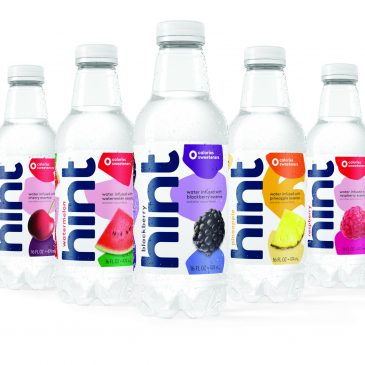Purpose At Work
Purpose At Work: How Hint Water Leverages Purpose and Gains Market Share
One of the benefits of modern technology is the ability to view distant parts of the world in vivid, candid detail like never before. This connectivity allows us to see a Fijian sunset in real-time over Snapchat, cheer a winning soccer goal in South America on Periscope, or to contemplate a puddle in suburban England. (Yes, this was actually a thing for a minute.) Quite obviously one of the more recent and exciting developments in consumer digital technology has been the emergence of VR/360-degree video, which allows users an immersive experience into worlds both real and imagined. By donning a headset (or cardboard apparatus), viewers are transported on a journey into a world different from their own, and in essence, enjoy a digital vacation.
So why not offer a holiday to a group of kids who could surely appreciate it?
This was the thinking behind Expedia’s recent campaign benefiting sick children at St. Jude’s Hospital in Memphis, Tenn. As William Gelner, chief creative officer at Expedia’s creative agency 180LA puts it, “We hit on this insight that travel actually does have healing power, and when we were talking to the kids at St. Jude, one of the things we found out was that a lot of them had dreams of places and adventures they wanted to go on, but sadly, they wouldn’t be able to because of their illnesses.”
Sensitive to the conditions of the children chosen to participate in the campaign, large, immersive installations were created for the kids to enter rather than the more typical headset experience of 360 video. These real-time projection rooms then featured a unique dream adventure picked by the child. For one girl, it was running with horses in Argentina, while another chose to dive into blue, tropical waters and surround herself with schools of fish. In a thoughtful touch, Expedia staff that have overcome their own major health issues were involved in capturing the footage for the children. This thoughtfulness adds another girder to the campaign’s strategic underpinning, while also offering a welcomed emotional layer to its storytelling.
This type of purposeful storytelling is familiar for the online booking giant, which has previously explored travel through the lens of a father coming to terms with his daughter’s homosexuality by flying across the country to her wedding. As Expedia’s senior director of brand marketing Vic Wallia states, “We believe in the power of travel, and we believe that if everyone had the ability and access to travel, the world would be a different place. There’d be less crime, less bigotry if more people saw the world beyond their own. So our goal is to get more people traveling by building the tools and technology for it.”
Expedia’s commitment to good purpose and better stories has proven best in business—the brand and its subsidiaries enjoy more than double the number of unique monthly visitors to their sites than that of the second place competition. It’s a heartening example of a brand having the courage to tell meaningful stories in ways that not only strategically make sense for them, but also resonate with audiences in a real way. And when combined with technology that brings those stories to life in surprising, captivating ways, it’s a powerful example of the positive influence we can all have on one another and the world.
Image via Flickr courtesy of Satoru Fujiwara at https://flic.kr/p/5uMNsL

Purpose At Work: How Hint Water Leverages Purpose and Gains Market Share

Purpose At Work: Graeter’s Ice Cream’s Ingredients Success

How Race4Good To Accelerate Employee Engagement

